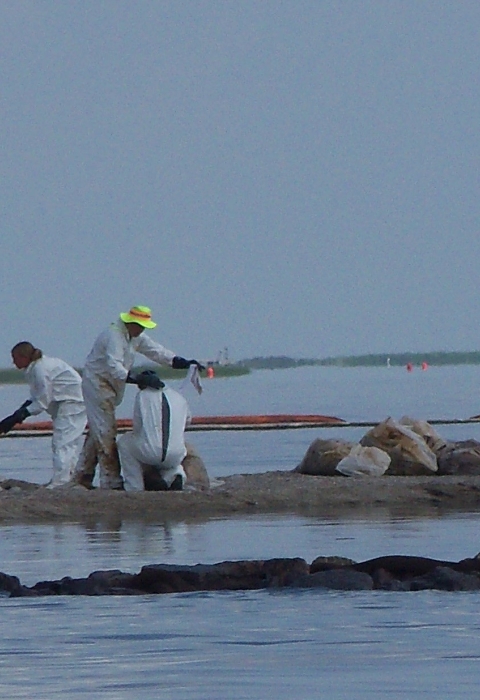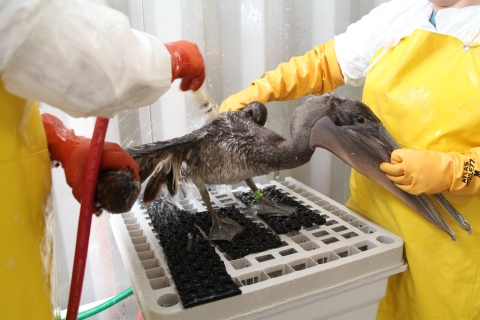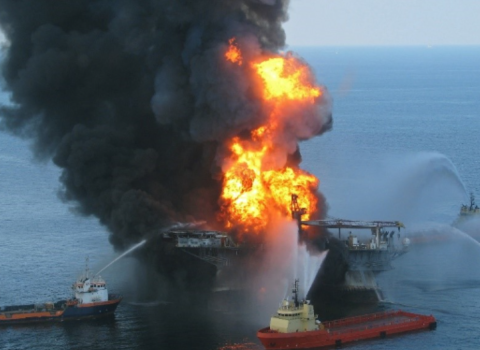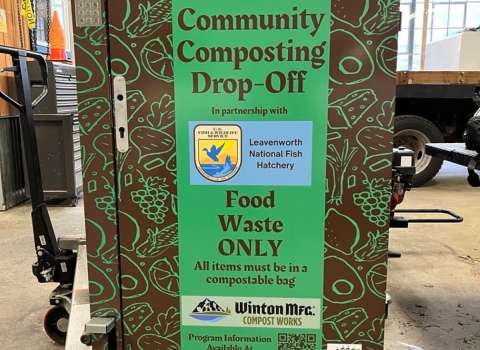Welcome back to our After the Spill: Deepwater Horizon series where we will be sharing firsthand accounts from Service employees who were on the ground (or the water) in the Gulf during the immediate aftermath of Deepwater Horizon.
Below you can read Carmen Simonton’s reflections from her deployment. Carmen is a Migratory Birds Wildlife Compliance Specialist and was crucial for managing volunteers and facilitating wildlife rehabilitation.
Carmen Simonton, Migratory Birds Wildlife Compliance Specialist
Being able to be part of such a historic event is probably one of the most memorable moments of my 38-year career with the Fish and Wildlife Service. I received a call on May 1, 2010, from Dr. Heidi Stout who was the veterinarian contracted with BP to respond as the wildlife rehabilitator to manage the wildlife that was affected by the Deepwater Horizon oil spill. I had personally never been involved or deployed to an oil spill before so I had no idea what I was in for when I arrived at the BP Training Center in Houma, Louisiana, nor did I know that I would be here for the next seven months of my life. When I pulled into the parking lot it was filled with cars, trucks, vans, media vans, police, fire trucks, etc. I walked into the Center and there was a guard there that checked you in and the identification of those coming and going. I only knew the name of our person from the Service who was in charge, but he had no idea I was coming. When I got to the guard, he asked me for my name and told me I wasn’t on “the list” and someone from the wildlife division would have to come and escort me in. There was a man who had a white vest on with a white beard and looked to be very much in control that looked at me and waved towards me to come in. The guard immediately said go ahead. As I walked towards this man, I quickly realized he was not waving at me but I quickly went to find my fellow Service employees and the man who was in charge. I later found out that the man with the white vest was the head person from BP in charge of the oil spill. From that point forward it was like a roller coaster ride I will never forget.
We set up a paraprofessional list within three days of more than 1000 volunteers from every state in the U.S. and from 9 other countries who wanted to help with the wildlife. I became the Paraprofessional/Volunteer Coordinator with the assistance of four other Service employees in coordination with Dr. Stouts team who took charge of creating four wildlife rehabilitation centers in Louisiana, Mississippi, Alabama, and Florida. We quickly realized that we were not going to be able to manage the amount of oiled and injured wildlife that were coming into these facilities without the help of persons who were trained to rehabilitate these animals, as well as those that were able to actually capture the animals in oil-soaked marshes, beaches, and islands in the Gulf. We also developed the protocols and system in order to transport animals from the field to the Centers, to release sites, and to other rehabilitation facilities. We were able to contract with a transport company that was set up all along the coast to retrieve the birds from the vessels and take them to the centers.
We also had more than 1000 volunteers who did not have the training to work with the animals but wanted to volunteer wherever they could. We worked with the National Audubon Society to place volunteers all along the Gulf coast at the sites where animals were brought in so they could keep them safe until the transport team could pick them up. This also allowed our capture teams to be able to deploy quickly to go and retrieve more animals.
This oil spill was the first to ever pay the responders who worked at the rehabilitation centers and the capture teams. These positions have always been filled with volunteers but because of Hurricane Katrina and the number of people who were affected locally by the oil spill BP agreed to pay the paraprofessionals an hourly wage, hotel and travel accommodations. The hurdles that came with paying for these positions were complicated and also politically sensitive. In order to reach out to local resources, we contacted the Animal Disaster Response Teams, licensed wildlife rehabilitators and their sub-permittees, veterinary colleges, zoological institutions and animal control divisions in Louisiana, Mississippi, Alabama, and Florida. We knew that these individuals would meet the paraprofessional definition, however, because the pay was higher than what most normally make in their permanent positions, we had individuals resigning and wanting to work full time at the oil spill. In Florida this was a very sensitive issue due to the many licensed wildlife rehabilitators and sub-permittees. We set up a biweekly conference call through the Florida Fish and Wildlife Commission with 180 open lines to inform the rehabilitation community of our efforts and how we would contact their employees or the Center Directors to fill these positions. We also used this as a forum to listen to concerns from the community and to reassure everyone that the wildlife was being cared for.
Our team was also tasked with setting up the BP hotline where the public called in to report injured and oiled animals. We developed the Hurricane Evacuation Plan to transport animals from the wildlife centers, Transition Plan, Outreach Plans, Migratory Bird Release Plans, Evidence Intake Center Plans, Colony Nesting Bird Survey Plans, and the Wildlife Hotline Phase Out Plan. Even though it was such a horrific event, the courage and dedication from everyone involved was phenomenal. I met and worked with some of the most amazing wildlife professionals in the country and I’m proud of the work my team accomplished and what we were able to do for our Nation’s natural resources.
-----------------------------------------------------------------------------------------------------------------------------------------
Stay tuned for more firsthand accounts from Service employees in our After the Spill: Deepwater Horizon series.








